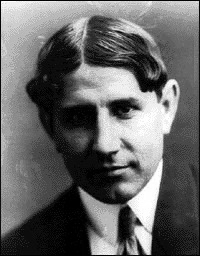Pablo Gargallo
This article needs additional citations for verification. (January 2019) |

Pablo Emilio or Pau Emili Gargallo (5 January 1881 – 28 December 1934), known simply as Pau or Pablo Gargallo, was a
.Life and career
Born in Maella, Aragon, he moved to Barcelona, with his family in 1888, where he would begin his training in the arts. Gargallo developed a style of sculpture based on the creation of three-dimensional objects from pieces of flat metal plate, and he also used paper or cardboard. Some of these sculptures have a form of cubism. For example, only one half of a face may be shown, and it may have only one eye. He also made more traditional sculptures in bronze, marble and other materials.


He spent a significant part of his life in the
In 1907, he stayed at the artists commune
Among Gargallo's works are three pieces based on Greta Garbo: "Masque de Greta Garbo à la mèche," "Tête de Greta Garbo avec chapeau," and "Masque de Greta Garbo aux cils." Together with Dídac Masana, Gargallo sculpted the great arch over the front of the stage of the Palau de la Música Catalana in Barcelona. The work depicts the Ride of the Valkyries in Richard Wagner's opera Die Walküre (The Valkyries).
Gargallo suffered from fulminating
Gallery
-
Isidre Nonell, bronze, 1911, MNAC
-
Portrait of Picasso, stone, 1913, MNAC
-
Prophet, bronze, 1933, MNCARS
See also
Further reading
- P. Courthion: Louvre complet de Pablo Gargallo (Paris, 1973) [with catalogue raisonné by P. Anguera-Gargallo]
- A. Cirici: Gargallo i Barcelona (Barcelona, 1975)
- J. Anguera: Gargallo (Paris, 1979)
- Gargallo (exhib. cat., Paris, Mus. A. Mod. Ville Paris, 1981
- Gargallo: Exposició del centenari (exhib. cat. by M.L. Borras and others, Barcelona, Ajuntament, 1981)
- Gargallo (exhib. cat., Paris, Gal. Marwan-Hoss, 1983; 1989)
- El Museo Pablo Gargallo (Saragossa, 1985)
- Gargallo (exhib. cat., London, Gimpel Fils, 1986)
- Gargallo (exhib. cat., New York, Arnold Herst & Co. Gal., 1987)
- Catálogo del Museo Pablo Gargallo (Madrid, 1991)
- Gargallo (exhib. cat., Pontoise, Mus. Pontoise, 1992)
References
External links
- Musée Pablo Gargallo
- Museum of Modern Art, New York
- Musée National d’Art Moderne, Centre Georges Pompidou, Paris
- Pablo Gargallo in American public collections, on the French Sculpture Census website



